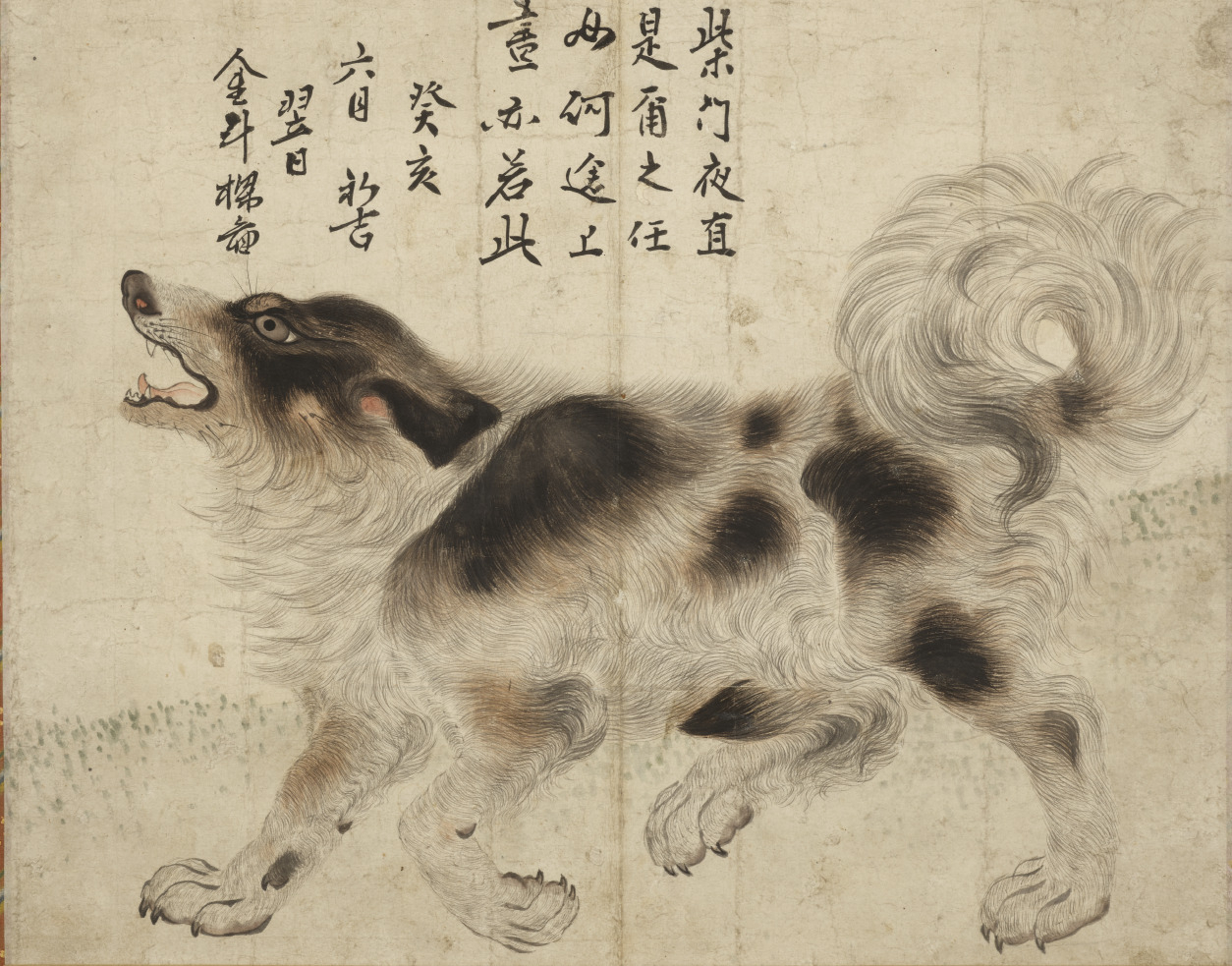National Museum explores ideals of Joseon Kings Yeongjo, Jeongjo
By Choi Si-youngPublished : Dec. 11, 2023 - 14:43

A special exhibition that revisits an era when two Joseon kings pursued rule of impartiality has opened ahead of next year’s 300th anniversary of King Yeongjo’s ascendance to the throne. King Yeongjo was succeeded by his grandson, King Jeongjo.
The exhibition, organized by the National Museum of Korea under the theme “Wise and Unbiased,” comprises calligraphy and paintings that, according to the museum, declared an equal share for all under a powerful monarch.
“King Yeongjo and his grandson Jeongjo needed a vast pool of talent alongside them to execute their ideals. And the way to make that happen was through calligraphy and paintings,” the museum’s Director-General Yoon Sung-yong said Thursday during an opening ceremony.
What distinguishes this exhibition, Yoon said, is a painting of Sapsaree, a dog breed native to Korea, done in 1743 by Kim Du-ryang, a royal court painter. The work is being shown to the general public for the first time. King Yeongjo, who ruled from 1724 to 1776, likened his subjects to Sapsaree, which is imbued with power to ward off evil spirits in Korean folklore.
The poem that accompanies the painting -- composed by King Yeongjo and written out by his painter -- is a rebuke against his subjects who continued to openly defy his reform initiatives. Two factions, the Noron and Soron, were at each other’s throats, getting in the way of ushering in a new era of what King Yeongjo believed was harmony and fairness.
His grandson, King Jeongjo, who ruled between 1776 and 1800, built on efforts to instill values of harmony and fairness in a dynasty rocked by succession battles while strengthening his grip on power.
“The push to do all that wasn't to serve themselves, the kings,” Yoon said. “It was to expand the pool of their subjects and thus wisdom coming from it. The endgame here was policies that could better serve the people.”
The ideals the Joseon kings had imagined are believed to be best shown in a painting with eight panels -- a work that depicts an eight-day trip by King Jeongjo to Hwaseong, a city in Gyeonggi Province.
The panels each offer a glimpse into the everyday life of ordinary people and royal subjects. The central theme is the seeming contentment with what they were given by a “wise and strong” monarch.
“The calligraphy and paintings on display represent a way to reach out to the subjects,” said Lee Su-kyung, a chief curator who led a media tour of the exhibition on Thursday.
“For those close to the two kings, the works were a way to remember their time with the monarchs, and for us looking at them today, they are a means to communicate with the past,” Lee added.
The exhibition reveals the minds of kings who had tried to “steer the dynasty into the right direction,” a period often punctuated by challenges, which the two sought to overcome as they searched for their ideals, according to Lee.
“Wise and Unbiased” runs through March 10 at the National Museum of Korea in Yongsan-gu, Seoul. The exhibition is free of charge until Dec. 17, after which adults between the ages of 25 and 64 will be charged 5,000 won ($3.8). Admission for those aged between 7 and 24 is 3,000 won.

-
Articles by Choi Si-young



















![[Today’s K-pop] Treasure to publish magazine for debut anniversary](http://res.heraldm.com/phpwas/restmb_idxmake.php?idx=642&simg=/content/image/2024/07/26/20240726050551_0.jpg&u=)